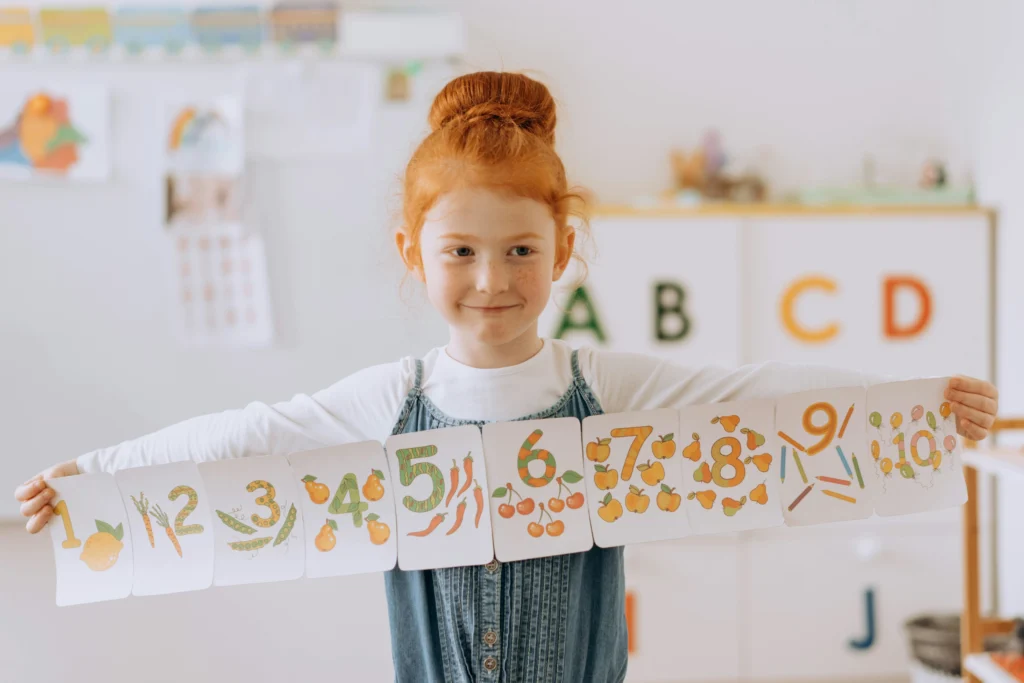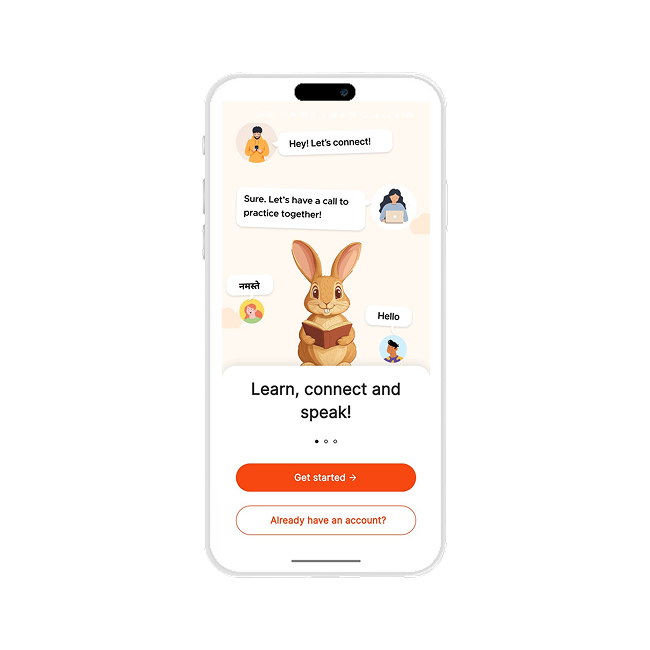Opposite words, or antonyms, are like the yin and yang of language—creating balance, contrast, and clarity in communication. Whether you’re describing the blazing sun or the chilling night, opposites help paint vivid pictures and make your language more dynamic. From making your writing more engaging to enhancing your vocabulary, mastering antonyms is key to expressing yourself effectively. In this blog, we’ll dive deep into the world of opposite words—exploring their types, how to use them, and why they are essential for both casual conversations and powerful storytelling. Ready to unlock the magic of contrast? Let’s dive in!
What are opposite words?
Antonyms embody so much more than mere opposites. The term antonym comes from antonymy, which is a technical term for words that have contradictory meanings.
Unlike synonyms or words that mean similar things, opposite words stand in contrast to one another and offer a way to express opposing ideas, qualities, or attributes.
Antonyms are words that have opposite meanings. They represent contrasting ideas or concepts within language, such as happy and sad or hard and soft.
At their core, antonyms are indispensable rhetorical tools in both spoken and written discourse for several reasons.
For one, antonyms facilitate clarity, precision, and sophistication in communicating. They enable us to articulate subtleties of meaning and convey complex concepts with clearer context.
Take this sentence for example: What unites us is stronger than what divides us. Here, the two opposites (divide and unite) work in contrast to express opposing states of a community. Their clear distinction provides nuance and poetic flair to the sentence.
Secondly, antonyms encourage critical thinking and can help with problem-solving. In various contexts, including education, science, and decision-making, identifying opposites can clarify different options, making it easier to assess alternatives.

When should you use opposite words
When it comes to word choice, antonyms should be used whenever you want to convey contrasts, clarify meaning, or add depth to your expression. Here are some situations when using opposite words is particularly appropriate:
- Clarifying meaning: Use opposite words to simplify or refine the meaning of a concept or idea. For example, if you want to emphasize the difference between two options, contrasting their opposites can help provide transparency.
- Expressing emotions: Opposite words are effective in expressing emotions and feelings, especially when you want to highlight contrasts in mood or attitude.
- Describing characteristics: When describing people, objects, or situations, antonyms can be used to illustrate differing characteristics or qualities—for example, two coworkers who are conversely lazy and motivated.
- Providing directions: Employing opposite words to provide directions or describe spatial relationships is also useful. For example, when giving instructions on how to navigate, contrasting directions, such as up and down or left and right, can be helpful.
- Creating contrast: You can also employ opposite words to create contrast and tension in creative writing, storytelling, argumentation, or artistic expression. These words help engage an audience and evoke an emotional response.
- Problem-solving: Lastly, antonyms can also help when assessing alternatives or contrasting ideas or solutions. When faced with a problem, considering opposites allows people to explore different approaches and evaluate their merits against one another.
Common Opposite Words in English
Here is a list of common opposite words categorized by their type:
A. Opposites for Adjectives
| Word | Opposite |
| Big | Small |
| Happy | Sad |
| Fast | Slow |
| Soft | Hard |
| Old | Young |
| Strong | Weak |
| Deep | Shallow |
B. Opposites for Verbs
| Word | Opposite |
| Come | Go |
| Win | Lose |
| Buy | Sell |
| Laugh | Cry |
| Love | Hate |
| Build | Destroy |
| Give | Take |
C. Opposites for Nouns
| Word | Opposite |
| Day | Night |
| Love | Hate |
| War | Peace |
| Friend | Enemy |
| Success | Failure |
| Victory | Defeat |
| Life | Death |
100+ opposite words in english
- Alive ⇄ Dead
- Big ⇄ Small
- Hot ⇄ Cold
- Happy ⇄ Sad
- Fast ⇄ Slow
- Hard ⇄ Soft
- Old ⇄ Young
- Strong ⇄ Weak
- Light ⇄ Dark
- Full ⇄ Empty
- Rich ⇄ Poor
- Beautiful ⇄ Ugly
- Tall ⇄ Short
- Wide ⇄ Narrow
- Clean ⇄ Dirty
- Thick ⇄ Thin
- Deep ⇄ Shallow
- Early ⇄ Late
- Safe ⇄ Dangerous
- Open ⇄ Closed
- Near ⇄ Far
- Left ⇄ Right
- Full ⇄ Hungry
- Big ⇄ Little
- New ⇄ Old
- Weak ⇄ Strong
- Happy ⇄ Unhappy
- Light ⇄ Heavy
- Hard ⇄ Easy
- Rich ⇄ Poor
- Success ⇄ Failure
- Friend ⇄ Enemy
- Buy ⇄ Sell
- Love ⇄ Hate
- Above ⇄ Below
- Win ⇄ Lose
- Love ⇄ Loathe
- Quiet ⇄ Loud
- Smooth ⇄ Rough
- Beautiful ⇄ Plain
- Clean ⇄ Messy
- Simple ⇄ Complex
- Success ⇄ Defeat
- Soft ⇄ Hard
- Dry ⇄ Wet
- Near ⇄ Distant
- Strong ⇄ Fragile
- Big ⇄ Tiny
- Hot ⇄ Cool
- Generous ⇄ Greedy
- Funny ⇄ Serious
- Gentle ⇄ Harsh
- Rich ⇄ Impoverished
- Full ⇄ Starving
- Empty ⇄ Full
- Loud ⇄ Quiet
- Brave ⇄ Fearful
- Dirty ⇄ Clean
- Expensive ⇄ Cheap
- Open ⇄ Closed
- Shiny ⇄ Dull
- Empty ⇄ Filled
- Friendly ⇄ Hostile
- Innocent ⇄ Guilty
- Polite ⇄ Rude
- Smart ⇄ Stupid
- Strong ⇄ Weak
- Tall ⇄ Short
- Flexible ⇄ Rigid
- Ancient ⇄ Modern
- Wide ⇄ Slim
- Clean ⇄ Filthy
- Sick ⇄ Healthy
- Funny ⇄ Boring
- Sweet ⇄ Sour
- Hardworking ⇄ Lazy
- Tight ⇄ Loose
- High ⇄ Low
- Dead ⇄ Alive
- Wide ⇄ Narrow
- Beautiful ⇄ Unattractive
- New ⇄ Used
- Kind ⇄ Cruel
- Rich ⇄ Poor
- Clean ⇄ Unclean
- Bitter ⇄ Sweet
- Truth ⇄ Lie
- Brave ⇄ Cowardly
- Black ⇄ White
- Sharp ⇄ Dull
- Early ⇄ Late
- Happily ⇄ Sadly
- Bright ⇄ Dim
- Sharp ⇄ Blunt
- Tough ⇄ Delicate
- Clean ⇄ Unclean
- Bitter ⇄ Sweet
- Round ⇄ Square
- Above ⇄ Below
- Rich ⇄ Poor
- Funny ⇄ Sad
Importance of Learning Opposite Words
In the vast and dynamic world of language, opposite words, also known as antonyms, play a crucial role in enriching communication and enhancing the clarity of expression. These pairs of words that signify opposite meanings—such as “hot” and “cold” or “happy” and “sad”—are not only fundamental for understanding language but also for effective communication. Let’s explore why learning opposite words is so important in language development.
1. Enhancing Vocabulary and Comprehension
One of the primary reasons to learn opposite words is to expand your vocabulary. Antonyms provide an understanding of a word’s range of meaning, helping you distinguish subtle differences in context. For example, knowing that “happy” has an opposite in “sad” helps you understand the emotional range between these two words. This understanding allows you to choose words more accurately, whether you are speaking, writing, or reading. The broader your understanding of opposites, the greater your ability to understand nuanced conversations and texts.
2. Improving Communication and Expression
Opposite words provide contrast, which in turn sharpens your ability to convey a clearer message. Imagine describing something without using opposites; the description would likely be vague and limited. For instance, “The weather is nice” sounds rather bland, but saying “The weather is sunny, not cloudy,” or “The weather is warm, not cold,” instantly gives more detail and contrast. By using opposites, you can paint a more vivid picture, making your message easier to grasp and more engaging for your audience.
3. Enhancing Writing and Speaking Skills
Mastering opposite words enables you to add variety to your writing and speaking. Instead of relying on the same adjectives or phrases, you can use antonyms to describe situations, people, or objects from different perspectives. This makes your communication more dynamic and interesting. For instance, using both “tall” and “short” to describe two different characters in a story provides a clearer visual contrast for the reader. Similarly, varying your vocabulary in conversation allows you to sound more fluent and confident.
4. Developing Critical Thinking
Learning opposite words helps develop critical thinking and reasoning skills. When you understand opposites, you begin to think in terms of comparisons, contrasts, and distinctions. This ability to assess the differences between two ideas, objects, or situations is key to making informed decisions. Whether you’re analyzing an argument, creating a persuasive essay, or simply trying to make a decision, understanding opposites helps you weigh options more effectively.
5. Supporting Language Learning
For non-native speakers or learners of a new language, mastering opposite words can be a powerful tool in the learning process. Antonyms are often easier to remember because they provide a direct contrast to something already known. Additionally, they give learners a more well-rounded understanding of the language by illustrating not only how words are used but also the contexts in which they may be negated or reversed. For example, understanding both “big” and “small” deepens the comprehension of sizes, enhancing both spoken and written skills in the new language.
6. Facilitating Conversations
Opposite words can also be valuable in conversation. When discussing personal preferences, feelings, or experiences, opposites allow speakers to articulate their points more clearly. You can more effectively express likes, dislikes, moods, and opinions, using opposites to show contrast and intensify the meaning of your message. For example, expressing how “hot” the weather is can be balanced by its opposite, “cold,” to compare different seasons, making it easier for your audience to relate to your experience.
The Role of Opposite Words in Literature
Opposite words, or antonyms, play an integral role in literature by creating contrast, emphasizing themes, and adding depth to character development and narrative structure. Writers skillfully use antonyms to enhance the emotional impact of their work, manipulate the tone, and provide readers with a deeper understanding of the subject matter. Here’s a look at the significant role of opposite words in literature.
1. Creating Contrast and Conflict
Opposites are a powerful tool for establishing conflict, one of the most vital elements in literature. In any story, conflict is often at the heart of the plot, and opposites help bring this conflict to life. For instance, the contrast between “light” and “dark” is commonly used in literature to symbolize the battle between good and evil, innocence and corruption, or knowledge and ignorance. Classic works like The Lord of the Flies use this contrast to highlight the inner struggles and moral dilemmas faced by the characters. Without opposites, such conflicts might lack the depth and clarity that make them so compelling.
2. Emphasizing Themes
Opposite words can emphasize the central themes of a piece of literature. Consider how the contrasting words “love” and “hate” are used in works like Shakespeare’s Romeo and Juliet, where these emotions drive the tragedy and the characters’ decisions. The contrast between opposites often magnifies the impact of the theme, enabling readers to better understand the complexity of human emotions and societal structures. Whether it’s the contrast of “freedom” versus “oppression” or “hope” versus “despair,” opposites allow the writer to draw attention to the major ideas that the narrative seeks to explore.
3. Enhancing Characterization
Antonyms also play a key role in character development. Writers often use opposite traits to define characters and explore their inner conflicts. For example, a character may be described as both “brave” and “cowardly” at different points in the story, showing the duality of their nature and making them more complex. This internal struggle—represented by opposite qualities—adds layers to the character and makes them more relatable. In works like Dr. Jekyll and Mr. Hyde, the stark contrast between the two personalities of the protagonist highlights the duality of human nature.
4. Creating Mood and Atmosphere
The use of antonyms also helps establish the mood and atmosphere in a literary work. Writers can manipulate opposites to evoke specific emotional responses in the reader. The contrast of “warmth” versus “cold” can evoke feelings of comfort or isolation, while “chaos” versus “order” can create a sense of tension or stability. This play on opposites deepens the reader’s emotional experience of the narrative.
In literature, opposite words do far more than simply provide contrast—they are essential in shaping the conflict, themes, and characters of a story. By skillfully incorporating antonyms, writers add nuance, emotional depth, and complexity, enriching the literary experience for the reader. Whether highlighting the battle between good and evil or exploring the complexities of human nature, opposite words are a key tool in the hands of a skilled storyteller.
How to Use Opposite Words Effectively: A Guide to Mastering Contrast
Opposite words, or antonyms, are more than just a tool to expand your vocabulary—they’re powerful instruments for making your language more dynamic, engaging, and impactful. Whether you’re writing an essay, delivering a speech, or having a casual conversation, knowing how to use antonyms effectively can take your communication to the next level. Here’s how to do it like a pro:
1. Create Contrast for Clarity
Opposites are fantastic for drawing sharp contrasts. Imagine describing a place as both “vast” and “confined.” The stark difference between these words paints a vivid picture and adds depth to your description. Use antonyms to help your audience quickly understand a concept by showcasing its extremes. For example:
- “The weather was hot in the day but freezing at night.”
This creates an immediate sense of change and emphasizes the wide contrast in conditions.
2. Emphasize Themes and Emotions
Antonyms can highlight emotions and themes, making them stand out in a memorable way. By placing opposites side by side, you amplify your message.
- “She felt both joy and sorrow, love and hate, in a single moment.”
Here, opposites intensify the complexity of the situation, making the emotions feel larger and more real. Whether you’re writing about internal struggles, external conflicts, or universal themes like good vs. evil, opposites are your go-to for emphasizing what’s at stake.
3. Add Depth to Characters
Characters are multi-faceted, and opposites can reveal the contradictions that make them interesting. A character might be “brave” but also “fearful,” creating inner conflict. By showcasing the extremes of a person’s personality, you add realism and depth to their characterization.
- “He was the epitome of calm in a storm, yet his heart raced with anxiety.”
This kind of contrast makes characters feel authentic and relatable—people are rarely just one thing.
4. Build Rhythm in Speech and Writing
A good rhythm makes language more engaging, and using antonyms helps achieve that balance. Alternate between opposites to maintain flow and keep your audience on their toes.
- “The night was dark, but the stars were shining bright.”
The rhythm between “dark” and “bright” creates a pleasing balance while reinforcing the contrast in the imagery.
5. Embrace Irony
Irony thrives on opposites, and when used correctly, it can add humor or drama to your writing. For example, saying something is “impossibly easy” is a contradiction that draws attention to the ease in a way that’s ironic.
- “The task was simple, yet I made it a complicated mess.”
Here, the opposite words highlight the humorous, self-aware nature of the statement.
Conclusion
Opposite words are essential to mastering the English language. They enhance vocabulary, improve communication, and make speech and writing more engaging. Whether you are a student, writer, or just someone who loves learning, understanding and practicing antonyms will significantly benefit you.
To improve your skills, start using opposites in daily life, play word games, and challenge yourself to learn new antonym pairs every day.
So, are you ready or hesitant to start your antonym journey?
FAQs for Must Learn 100+ Opposite Words in English
What are opposite words?
Opposite words, also known as antonyms, are words that have opposite meanings. For example, "hot" is the opposite of "cold," and "happy" is the opposite of "sad."
Why are opposite words important in language?
Opposite words help add clarity, contrast, and variety to communication. They make language more expressive and help convey nuanced meanings and ideas effectively.
How can opposite words improve my writing?
By using opposite words, you can create contrast, emphasize key points, and make your writing more engaging. They help you build dynamic descriptions and add depth to your characters, settings, and themes.
Can opposite words change the tone of a sentence?
Yes! Opposite words can shift the tone of a sentence dramatically. For example, using opposites like "love" and "hate" can evoke intense emotions, while using "bright" and "dark" can change the mood from hopeful to somber.
How do I remember opposite words more easily?
To remember opposite words, associate them with their meanings or visualize scenarios where these opposites apply. For example, imagine a hot day contrasted with a cold night to remember the opposites of "hot" and "cold."
Are there always clear opposites for every word?
Not always. While many words have clear antonyms, some words may have multiple opposites depending on context. For instance, "strong" could be opposite to "weak," but also "fragile" or "delicate" in certain contexts.
How do I use opposite words in everyday conversation?
In daily conversations, opposites can make your speech more engaging and help clarify your thoughts. For example, when discussing plans, you could say, “It’s going to be a long day, but a short night!” to create a contrast.
Are there any exceptions in the use of opposite words?
Yes, some opposites might not fit every context. For instance, “alive” and “dead” are opposites, but they can have different connotations in different situations, such as “a living soul” vs. “living in the moment.”
How can opposite words help in literature?
In literature, antonyms are used to highlight conflict, contrast, and themes, adding depth to characters, plot, and setting. They create tension and highlight key differences, like "good vs. evil" or "freedom vs. oppression."
Can using too many opposite words make my language sound complicated?
Yes, overusing opposite words can make your writing or speech seem too complex or forced. It’s important to use them strategically for emphasis, but not excessively, so your message remains clear and impactful.


